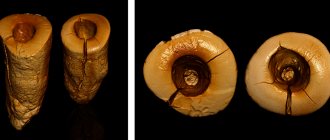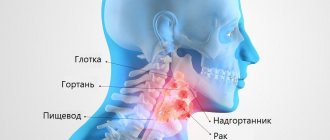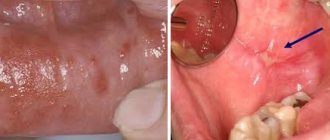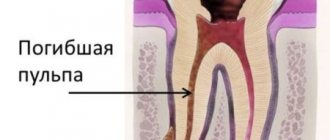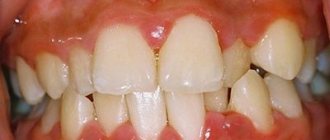05/18/2019 The 35 vertebrae that make up the human spine are divided into 5 sections by the medical community. Most often, failures are observed in three of them. Therefore, osteochondrosis occurs:
- lumbar;
- chest;
- cervical
Pain due to spinal osteochondrosis, depending on the location, can be of a different nature, but it causes equally a lot of trouble for a person. Let's take a closer look at what can hurt from osteochondrosis.
Spinal section . Cervical.
What and how it hurts . Due to impaired blood supply to the brain, a headache will occur, which is associated with vertebral artery syndrome. It has a burning character and spreads from the back of the head to the temples. The “referred” type of pain travels along the nerve endings from the pinched vertebrae to the brain. Such pain in osteochondrosis will be dull, pressing, felt in the crown, temples and back of the head. Migraine-like pain is observed, blood pressure fluctuates significantly.
Spinal section . Chest.
What and how it hurts . Girdle pain, radiating under the shoulder blades and shoulders, which literally does not allow you to breathe. Often with this type of osteochondrosis, pain in the arms is observed. If the disease affects the left side more, it is very similar to heart attacks. In the case of a right-sided lesion, it hurts, as with cholecystitis, i.e. in the right hypochondrium. A characteristic symptom is numbness in the arms, abdomen, and chest. Back pain with thoracic osteochondrosis can appear due to physical inactivity, excess weight, scoliosis, or too much stress.
Spinal section . Lumbar.
What and how it hurts . My back aches, my fingers go numb, my joints ache. Pain increases with any activity, even minimal. Trying to reduce movements, a person eventually gets stiffness and atrophied muscles. Low back pain due to osteochondrosis greatly impairs the quality of life.
The essence of the method
The impact is carried out by a low-frequency acoustic wave, which has a high pulse pressure, the ability to create a rarefaction zone, and fast speed. Thanks to these characteristics, it does not damage soft tissues, working only in the desired area.
There are 3 stages of impact:
- calm - no radiation;
- high pressure, which can reach 500 bar;
- rarefaction - that is, negative pressure after the wave subsides.
First, the sound wave compresses the cells in the area of effect, and then they stretch under the influence of vacuum. The cells receive mechanical stimulation, come to life, and begin to synthesize useful substances. At the same time, angiogenesis and microcirculation improve.
Table 1. Effect of shock wave therapy for osteochondrosis of the cervical spine
| Organs and tissues | Effect of UVT |
| Muscle fibers. | Elimination of spasm, restoration of ion exchange in the cell and intercellular space. |
| Nerve endings. | Blocking the reflex pain arc. |
| Blood vessels. | Improved microcirculation, growth of new blood vessels. |
| Tendons. | Anti-inflammatory effect, increased elasticity. |
| Leather. | Collagen synthesis. |
As a result of the complex effect of shockwave therapy on the body, adhesions, fibrosis, and calcium deposits characteristic of cervical osteochondrosis decrease or disappear. The main action occurs in the area of inflammation, the affected cells are destroyed.
Pain due to lumbar osteochondrosis
This species, according to statistics, accounts for half of the total diversity of the disease. And if with its thoracic variety the organs suffer less, since they are surrounded and held by the ribs, then the picture is completely different with the lower back. There are many nerve endings here, so the pain will be severe and sharp. Possible acute, subacute and chronic course. Acute pain syndrome in lumbar osteochondrosis is called lumbago or lumbago. At the same time, the person, as they say, cannot breathe or gasp, his lower back burns or goes numb. The duration can be up to a week, and from time to time, if a person is hypothermic, turns sharply, or physically works for a long time, it can come again and last a whole month. Irradiation is observed in the leg, buttock, and sacrum.
When is shock wave therapy prescribed for osteochondrosis?
With osteochondrosis, the intervertebral discs become thinner. Their degeneration is accompanied by a whole complex of symptoms, especially if an intervertebral hernia has already formed.
- Dizziness.
- Pain in the neck, head.
- Ringing or noise in the ears.
- Periodic feeling of lack of air.
- Nausea that occurs when turning the head suddenly.
- Visual impairment: decreased visual acuity, floaters, fog before the eyes.
- Blood pressure surges.
- Fainting with a tendency to become more frequent.
- Feeling of a lump in the throat.
- Shoulder pain.
- Numbness in fingers.
Table 2. Characteristic syndromes of cervical osteochondrosis
| Syndrome | Manifestations |
| Vertebral. | Decreased neck mobility, pain when turning the head. |
| Vertebral artery | Dizziness, headache, tinnitus, pressure surges, decreased vision, fatigue, drowsiness, tendency to faint. |
| Cardiac. | Chest pain, severe weakness, rapid pulse. |
| Koreshkovy. | Pain and numbness in the occipital region, tongue, discomfort in the shoulder girdle, numbness of the fingers (except the thumb). |
Osteochondrosis of the cervical spine develops slowly over several years. The disease goes through several stages in succession.
- Mild discomfort in the neck after a long stay in an uncomfortable position.
- Pain may be present at rest, but stiffness may occur – difficulty moving the neck.
- Other signs of damage to the cervical spine are added.
- Turning the neck is almost impossible, the pain becomes exhausting, the patient often consults doctors due to a sharp deterioration in the quality of life, a pronounced dysfunction of the musculoskeletal system.
What pain and other signs of thoracic osteochondrosis may be
Due to the fact that the nerves may be pinched, the lungs and heart may feel painful, and the hands may ache. In addition, symptoms are observed:
- dyspnea;
- stiffness of movements;
- fast fatiguability;
- muscle spasms;
- intercostal neuralgia;
- sharply painful sensations when coughing, inhaling, laughing, sneezing;
- difficulty moving the body;
- inability to be in a static position.
It has been observed that the disease is more severe in women than in men. To answer the question: “can the heart hurt with osteochondrosis?”, you should know that this is a subjective feeling of a person suffering from this disease. However, you should not diagnose yourself, since the “motor” may still fail simultaneously with the intervertebral discs. But the doctor must find out this.
Treatment of neck osteochondrosis with shock wave therapy
UVT is effective at all stages of the disease. The procedure for cervical osteochondrosis lasts no more than 30 minutes. The patient lies face down on a couch or sits on a chair, resting his elbows and head on a high bolster. The doctor lubricates the skin at the site of exposure with sound-conducting gel - this makes the penetration of acoustic waves more effective.
Then he places the nozzle on the patient’s body and turns on the device. All settings are pre-selected individually, taking into account the patient’s characteristics.
You may experience some pain or discomfort during the first two sessions. In this case, the effect is interrupted. After the pain reaction subsides, it continues again. A total of 5–9 sessions are required with intervals between them of 3–10 days.
Table 3 Pros and cons of shockwave therapy for osteochondrosis
| Pros of UVT | Disadvantages of UVT |
| 1. Quick feeling of the effect. Improvement in well-being is noticeable after the first session. 2. Can be used as monotherapy. 3. The session lasts no more than half an hour. 4. No need to visit the clinic every day. It is enough to come once every 5-7 days. | 1. The likelihood of developing pain and discomfort during the first or second session. |
How is osteochondrosis of the cervical spine diagnosed?
Diagnosis of pathology begins with consultation with a specialist. At the first manifestations of osteochondrosis, consult a rheumatologist, neurologist, surgeon or orthopedic traumatologist. The doctor will ask about the symptoms and the frequency of their occurrence; you need to provide the specialist with a complete medical history and the results of earlier studies (if any). The specialist will conduct a visual examination and palpation, and refer you for tests. During the examination, the doctor pays special attention to neck mobility, muscle tone, skin sensitivity and identifies the most painful areas.
To identify the condition of muscles, ligaments, blood vessels, and to detect inflammatory processes or tumors, an informative and safe diagnostic method is prescribed - MRI of the cervical spine. During an MRI of osteochondrosis, the patient lies on a special sliding table with his back. Rollers are placed on the patient's head to relieve muscle tension, and the limbs are secured with belts. Any slight movement during the procedure can affect the quality of the result. Next, the table moves into the tomograph area. The procedure does not cause pain. The tomograph makes a lot of noise during scanning, so you can use headphones to avoid discomfort.
If MRI is contraindicated, there are other diagnostic methods such as computed tomography and radiography. X-ray is suitable only for primary diagnosis and does not provide a layer-by-layer image of the affected tissue. However, this study is the simplest and most economical, allowing you to examine the patient’s body in several projections. Due to the strong radiation exposure to the body, radiography cannot be performed frequently.
During a computed tomography scan, a scan is performed using one or more beams of ionizing rays. They pass through the human body and are recorded by detectors. The detectors move along the patient's body in opposite directions and record up to 6 million signals. The image displays tissues of different densities with precise definition of the boundaries of organs and the affected areas in the form of a section. The procedure allows you to obtain a layer-by-layer image.
Advantages of treatment at the Family Doctor clinic
If you have neck pain and suspect osteochondrosis, come to our clinic. You can make an appointment with a neurologist, therapist or orthopedist. Each of them will conduct a full examination, establish the correct diagnosis and prescribe treatment, including shockwave therapy or other methods of physiotherapy. Shock wave therapy is carried out using the SWISS DOLORCLAST MASTER, EMS SWITZERLAND device, which has a gentle effect on tissue and an almost complete absence of pain even at the beginning of therapy.
Treatment parameters and course duration are calculated separately for each patient. Shock wave therapy helps well with osteochondrosis not only of the cervical, but also of the lumbar region. Improvement comes quickly. If you follow the doctor’s recommendations, you can be free from the disease for a long time.
What can hurt from osteochondrosis?
To briefly answer this question, then, depending on which part of the spine is affected, almost any organ or part of the body can hurt. With osteochondrosis, the nature of the pain syndrome can often resemble many diseases of the internal organs, and it happens that they try to cure the patient of them, but over time it is discovered that the whole problem is in the spine. Where it hurts with osteochondrosis has become clearer. The question is: what to do? Treatment of this disease should be comprehensive, aimed at solving several problems. So, it is necessary:
- relieve pain syndrome;
- help restore the mobility of intervertebral discs;
- restore a person’s ability to move painlessly and to the maximum extent.
There are many treatment methods. Which one to use depends on the patient’s health, which part of the spine is affected, and how severe the disease is. In any case, resort to:
- taking medications;
- make blockades;
- credited to physical therapy;
- develop a diet;
- recommend manual therapy;
- alternative medicine methods;
- insist on performing physical therapy exercises.
All diseases of the spine have an extremely serious impact on overall health. Therefore, it is unwise to take any independent steps trying to get rid of osteochondrosis. The spine can be entrusted exclusively to highly qualified specialists.
Popular questions
Is it possible to perform shock wave therapy of the cervical area if the cervical vertebrae are fastened with a metal plate after a fracture?
Yes, you can. The presence of metal structures in the patient’s body is not a contraindication. It is advisable to bring x-rays with you to your first appointment.
How long does shock wave therapy help with spinal osteochondrosis?
If the course is completed in its entirety and the patient follows the doctor’s recommendations, remission lasts a long time, sometimes decades.
Is it possible to perform shockwave therapy for osteochondrosis of the lumbar and cervical spine at the same time?
Yes, you can. The doctor makes the decision.
Reasons for the development of osteochondrosis
An incorrect sitting position, in which the neck is pulled forward, leads to the development of cervical disease. In this case, excessive pressure occurs on the intervertebral discs, which leads to changes in the nuclei pulposus and compression of blood vessels. This is the position a person takes at a workplace in front of a computer. Therefore, office workers are most often exposed to the development of osteochondrosis of the cervical spine.
In addition, the reasons for the development of pathology may be:
- improper load distribution when carrying bags;
- excessively soft sleeping place (the spine bends in an unnatural shape);
- genetic predisposition;
- lack of vitamins and microelements in the diet;
- endocrine system disorders;
- curvature of the spine and poor posture during active growth of the body;
- cervical vertebrae injuries;
- presence of bad habits.
